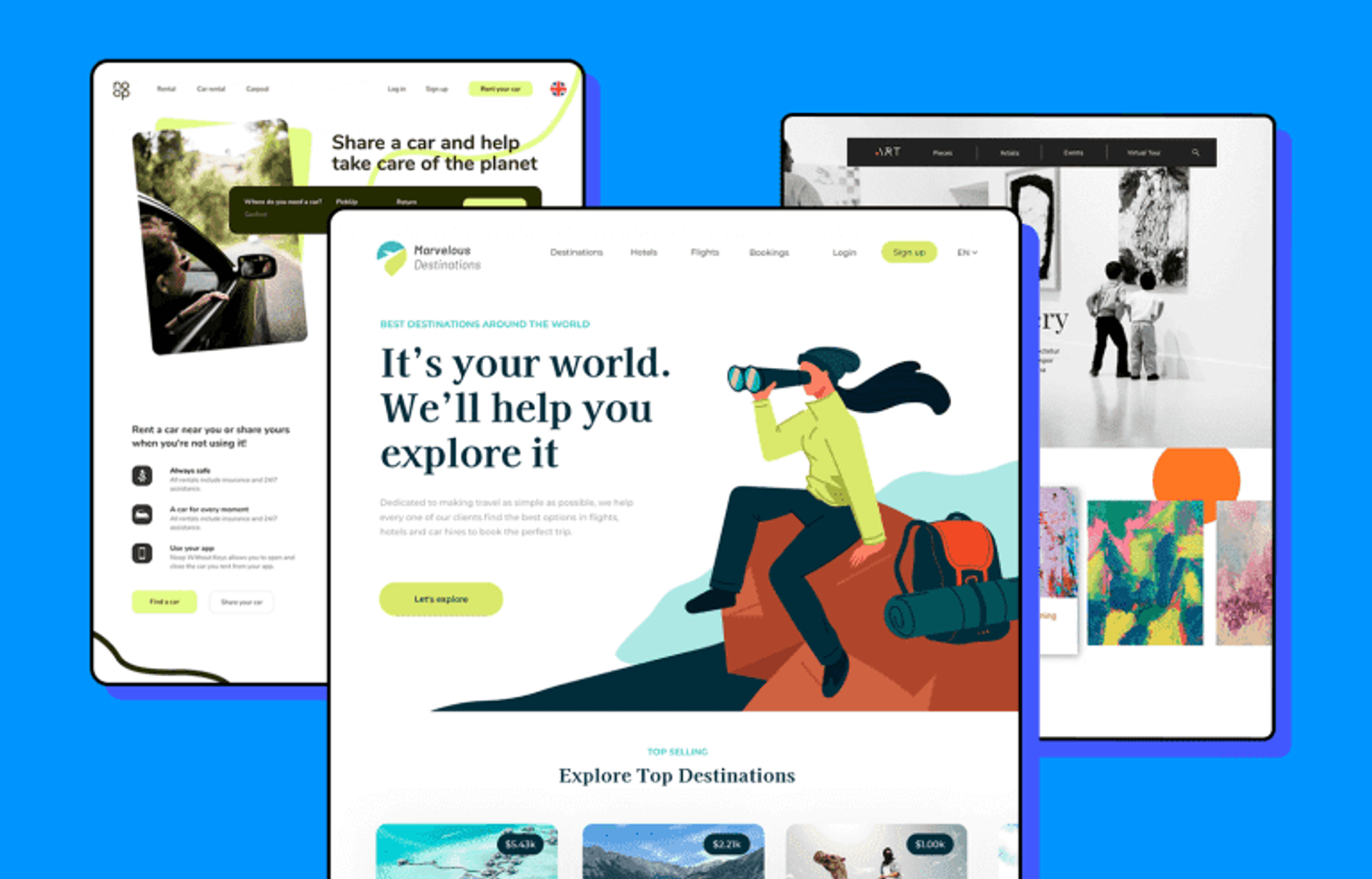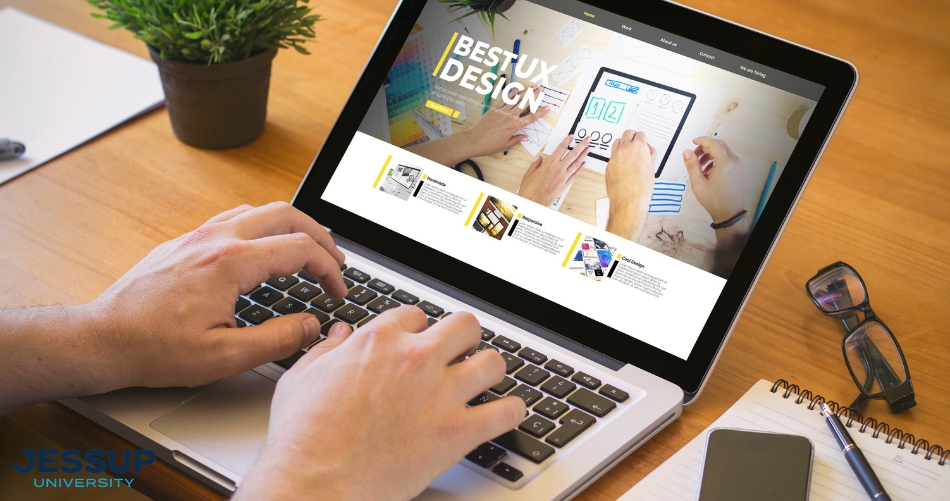Aligned Position Web Design: Building Responsive, Mobile-Friendly Websites for Modern Users
Aligned Position Web Design: Building Responsive, Mobile-Friendly Websites for Modern Users
Blog Article
The Very Best Types of Website Design to Improve User Experience and Interaction
In the ever-evolving landscape of digital interaction, the performance of Web layout significantly impacts user experience and interaction. Different style techniques, such as minimalist, receptive, and interactive layouts, each deal distinct benefits that can provide to varied individual requirements.
Minimal Website Design
As electronic landscapes end up being progressively chaotic, minimalist website design has actually arised as a powerful strategy to enhancing user experience. This style philosophy prioritizes simpleness, concentrating on important aspects while removing unnecessary disturbances. By utilizing enough white room, straightforward navigation, and a restricted shade palette, minimalist layout cultivates quality and routes user focus to essential material.
The core concept of minimalist website design is to produce a smooth interaction for customers. By reducing cognitive lots, individuals can promptly comprehend info without really feeling overwhelmed. This straight strategy not only enhances use yet additionally urges engagement, as site visitors are more most likely to explore a site that is visually attractive and very easy to navigate.
In addition, minimal style frequently highlights typography and images, making use of these aspects strategically to communicate messages effectively. In significance, minimal Web design is not just a fad; it is a thoughtful methodology that identifies the importance of user-centered design.
Responsive Web Style
In today's varied electronic environment, responsive website design has ended up being vital for producing a seamless user experience across a wide variety of tools. As individuals accessibility internet sites on smart devices, desktop computers, tablet computers, and laptops, the ability of a web site to adapt its layout and content to different display dimensions and resolutions is critical.
Responsive Web layout uses versatile grids, pictures, and CSS media inquiries to make sure that Web content exists efficiently, regardless of the device used. This strategy not just improves the aesthetic allure of a web site however also significantly boosts use. Users are more probable to involve with a site that supplies a regular experience, as it eliminates the disappointment of having to focus or scroll excessively.
Additionally, online search engine, including Google, prioritize mobile-friendly websites in search rankings. By embracing responsive layout, services can enhance their exposure and get to a wider target market. This method also streamlines site upkeep, as a solitary variation of the website can provide to all devices, minimizing the need for numerous variations. In recap, responsive website design is a fundamental method that boosts individual experience, engagement, and general satisfaction.
Interactive Web Layout
Receptive website design prepares for enhancing individual experience, yet interactive website design takes this a step even more by involving users in a more dynamic method - Aligned Position Web Design. By including components such as animations, clickable prototypes, and real-time comments, interactive Web layout captivates users, drawing them right into a richer browsing experience
This method not just cultivates interaction but also encourages individuals to discover content proactively instead of passively consuming it. Methods such as gamification, where users earn benefits for finishing tasks, can considerably improve the time invested in a website and enhance overall satisfaction. Moreover, interactive functions can simplify complex info, making it much more delightful and absorbable.

Integrating interactive style components can additionally lead to greater conversion prices, as individuals are most likely to involve with a website that proactively involves them. Aligned Position Web Design. Eventually, interactive Web style changes individual experiences right into memorable trips, making sure that visitors return time after time
Apartment Design
Characterized by its minimalistic method, level design emphasizes simpleness and performance, removing away unneeded elements and concentrating on necessary functions. This style viewpoint prioritizes use, guaranteeing that customers can navigate interfaces with ease and effectiveness. By utilizing a clean aesthetic, level design removes the clutter often found in a lot more luxuriant designs, therefore enhancing user concentrate on web content and performance.
The hallmark of level design exists in its use vibrant colors, straightforward typography, and geometric Click This Link forms. These aspects add to an aesthetically appealing interface that is both approachable and modern-day. Additionally, level layout cultivates a feeling of clarity, allowing users to discern necessary activities and information without distraction.
Additionally, flat design is especially effective in responsive Web layout, as its simpleness converts well across numerous gadgets and display dimensions. The lack of intricate appearances and gradients minimizes filling times, which is important for keeping user involvement. As electronic landscapes proceed to advance, flat style stays an appropriate option for developing user-friendly internet sites that boost general experience. By concentrating on essential features, flat style not click for info only meets user requirements but likewise motivates smooth communication, making it a vital component of efficient website design approaches.
Flexible Website Design
Adaptive Web layout customizes the customer experience by developing multiple taken care of formats customized to various display sizes and tools. Unlike responsive design, which fluidly changes a solitary layout, flexible style utilizes unique formats for particular breakpoints, making sure optimal discussion on different platforms. This approach enables developers to focus on the special qualities of each tool, boosting usability by delivering precisely what individuals require based upon their context.
Among the primary benefits of adaptive Web design is its capacity to optimize load times and efficiency. By serving tailored content and photos that fit the individual's device, sites can decrease data use and improve loading rates. This is specifically advantageous for customers with slower connections or restricted data plans.

In addition, flexible style facilitates a much more constant and controlled branding experience. Considering that developers create several layouts, they can guarantee that the aesthetic elements straighten with the brand's identification throughout various platforms - Aligned Position Web Design. This causes a natural customer experience, boosting interaction and advertising customer retention
Final Thought
Minimalist style cultivates clarity and focus, while receptive style makes sure versatility across numerous tools, promoting accessibility. Jointly, these style comes close to contribute to the development of easy to use settings that not just improve complete satisfaction but likewise drive higher conversion prices, highlighting their important value in contemporary Web design methods.

Minimalist design fosters clearness and emphasis, while receptive layout ensures adaptability throughout various gadgets, advertising access. Jointly, these style comes close to contribute to the creation of easy to use environments that not just boost contentment yet also drive greater conversion rates, emphasizing their critical significance in modern Web style approaches.
Report this page